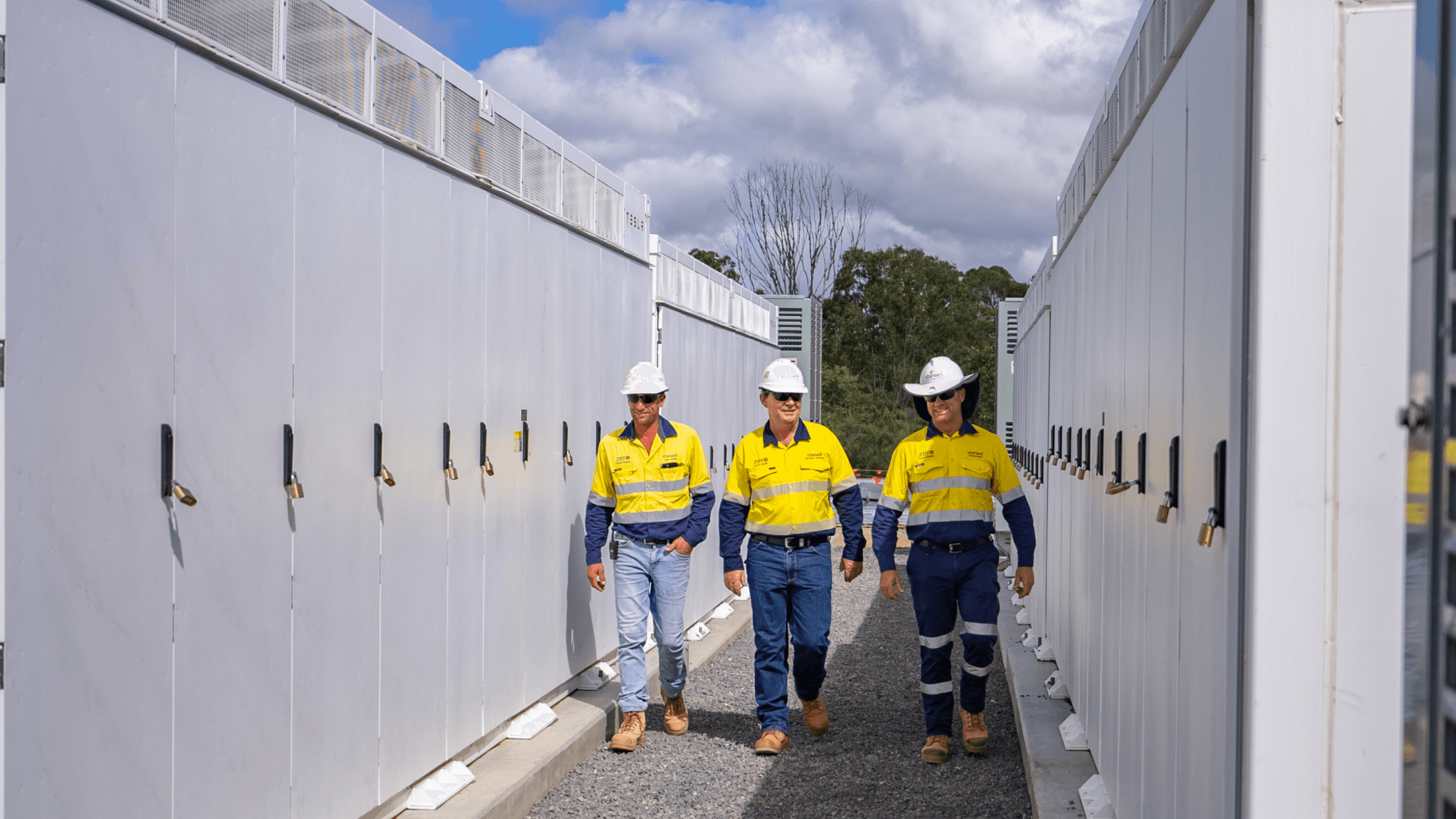How does battery storage work
How does battery storage work

We use batteries to power our phones, laptops and electric cars – and as the energy mix continues to evolve, batteries will play an increasingly important role in supporting our clean energy future.
Wind and solar power is making up a larger and larger proportion of the generation in the National Electricity Market (NEM). But the output of these generators is variable, or intermittent – it changes depending on the weather and the time of day.
In order for the grid to provide a continuous flow of energy to homes and businesses, even when the sun isn’t shining and the wind isn’t blowing, these variable energy sources need to be firmed with dispatchable sources that aren’t dependent on the weather, and can be ramped up quickly to cover shortfalls in supply.
Alongside other technologies, such as pumped hydro energy storage and low-to-zero emissions gas-fired generation, battery storage is expected to help fill the intermittency gap, and ensure a supply of clean, reliable and affordable power for generations to come.
What is battery storage?
A fundamental problem with electricity is that it can’t be captured and stored. Batteries are a way of getting around this problem – instead of storing electricity itself, they store chemicals that can absorb and release energy on demand, through a process known as electrochemistry.
Simply put, the battery charging process involves converting electrical energy into chemical energy. Discharging reverses the process, converting the chemical energy back into electrical energy. Batteries are typically charged when demand for energy is low, and discharged when demand is high.
There are many different types of batteries, made from many different materials, but the system that underpins all of them is an electrochemical cell. There can be one of these electrochemical cells in a battery, or several.
Each of these cells consists of three main components – two electrodes made of different chemicals, called the anode and the cathode, and a chemical solution called an electrolyte that allows for the flow of electrical charge between the anode and the cathode.
Some batteries only work in one direction – electrons flow from the anode to the cathode, transforming chemical energy into electrical energy until the chemical potential of the anode and the cathode runs out over time. The alkaline batteries in your TV remote could be an example of this type of battery, unless you’ve bought rechargeable batteries.
Rechargeable batteries are designed so that when electrical energy from an outside source is applied to the chemical system, its operation is reversed. The lithium-ion battery in your phone, for instance, is this sort of battery. When you plug your charger into your phone, electrons flow from the cathode to the anode, restoring your battery’s charge.
This process greatly enhances the battery’s lifespan, but it can’t last forever. Every charge cycle degrades the electrodes further, until eventually, even a rechargeable battery will stop working.
What’s a battery energy storage system?
A battery energy storage system (BESS) combines a rechargeable battery with other components to efficiently store, manage and release energy. These components would usually include an inverter that converts the direct current (DC) electricity produced by the battery into the alternating current (AC) electricity used by homes and businesses, and sophisticated control systems to regulate the flow of electricity to and from the grid.
BESS come in various shapes and sizes, from smaller-scale systems that homes and businesses can use to store energy generated by solar panels and reduce their reliance on the grid, to ‘grid-scale’ systems that combine many batteries to act as a large-scale generator in the electricity market.
Because of its cost-effectiveness and efficiency, lithium-ion – the same battery chemistry used in smartphones, laptops, tablets and electric vehicles – is the most common battery chemistry used in these household, business and grid-scale batteries, but not the only type.
How does battery storage support renewable generation?
Battery storage will help to stabilise energy grids that are increasingly reliant on variable renewable energy sources. Coupling batteries with renewable energy generation allows energy generated by solar panels and wind turbines at times when supply is plentiful and demand is low to be stored, and released during periods of peak demand.
This means that batteries can soak up ‘excess’ generation – generation that would otherwise be constrained off to avoid exceeding power system limits – from the middle of the day, and release it during the peak period when most people start to get home from work and switch on their devices, just as the sun is going down.
Batteries are particularly valuable for this purpose because they can respond to market conditions faster than other energy storage or generation technologies, turning on and off in fractions of a second. For instance, batteries can ramp up faster than fast-start gas generators, which are themselves faster than coal-fired power stations.
When used in this way, to smooth out the variable supply from renewable energy sources like wind and solar, battery storage can provide the grid with much-needed flexibility, reducing the need to rely on fossil fuels for dispatchable generation and allowing for greater deployment of renewables.
Ultimately, battery storage will be essential to a successful shift to renewable power – and critical to Queensland’s clean energy future.
Subscribe to our newsletter
STANWELL SPARK
Stay up to date with quarterly news from Stanwell, delivered straight to your inbox. Learn more about our projects, partnerships and how we're delivering affordable, reliable and secure electricity for Queensland.